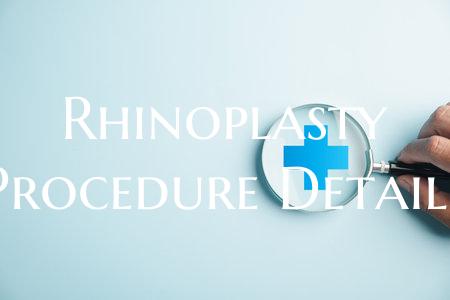
Rhinoplasty Procedure Details
Rhinoplasty Procedure Details
Rhinoplasty, commonly known as a nose job, is a surgical procedure that aims to enhance the aesthetic appearance of the nose or correct structural defects that may affect breathing. It is one of the most popular cosmetic surgeries worldwide, with patients seeking to achieve a more balanced and proportionate facial profile.
Procedure Overview: During a rhinoplasty procedure, the surgeon will make incisions either inside the nose (closed rhinoplasty) or across the columella between the nostrils (open rhinoplasty). The choice between these techniques depends on the complexity of the surgery and the desired outcome. The surgeon will then reshape the nasal bone, cartilage, and tissues to achieve the desired look. Cartilage grafts or implants may also be used to augment or support certain areas of the nose.
Surgical Goals: Rhinoplasty surgery can address various concerns, including reducing or increasing the overall size of the nose, refining the nasal tip, correcting a deviated septum for improved breathing, reshaping the bridge, or adjusting the nostril size and shape. Each procedure is tailored to the individual's unique anatomical features and aesthetic goals.
Recovery Process: After rhinoplasty, patients can expect some swelling, bruising, and discomfort, which typically subside within a few weeks. It is essential to follow post-operative instructions provided by the surgeon to promote proper healing. Patients should avoid strenuous activities, protect the nose from trauma, and attend follow-up appointments to monitor progress.
Long-Term Results: The final results of rhinoplasty may not be immediately apparent due to swelling, but over time, the nose will settle into its new shape. Patients can enjoy long-lasting improvements to their nasal appearance and, in cases of functional rhinoplasty, experience enhanced breathing and airflow.
Considerations: Before undergoing rhinoplasty, individuals should have realistic expectations about the outcomes of the procedure and engage in thorough consultations with a qualified plastic surgeon. Understanding the risks, benefits, and recovery process is crucial for making an informed decision about surgery.
In conclusion, rhinoplasty is a transformative procedure that can enhance both the aesthetic appearance and functional aspects of the nose. By working closely with a skilled surgeon and following proper post-operative care, individuals can achieve a harmonious and natural-looking result tailored to their unique facial features.